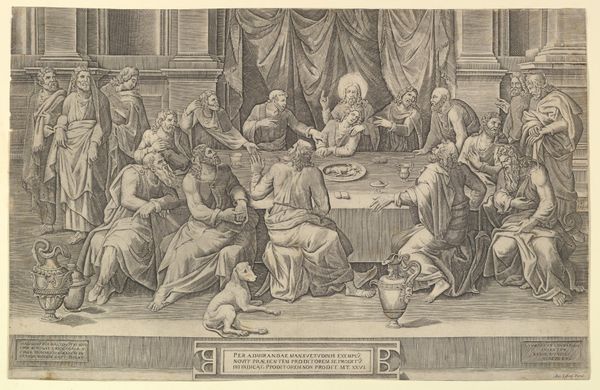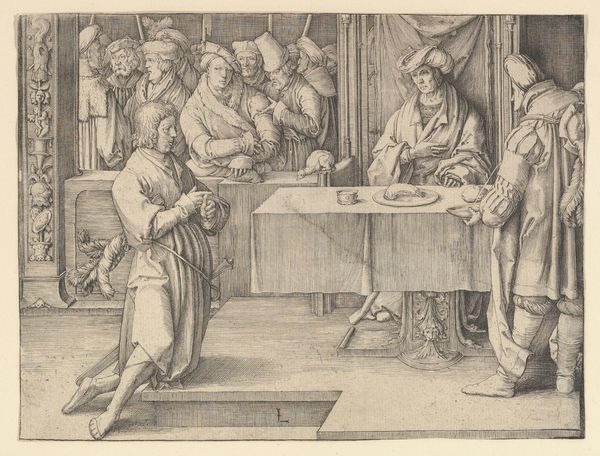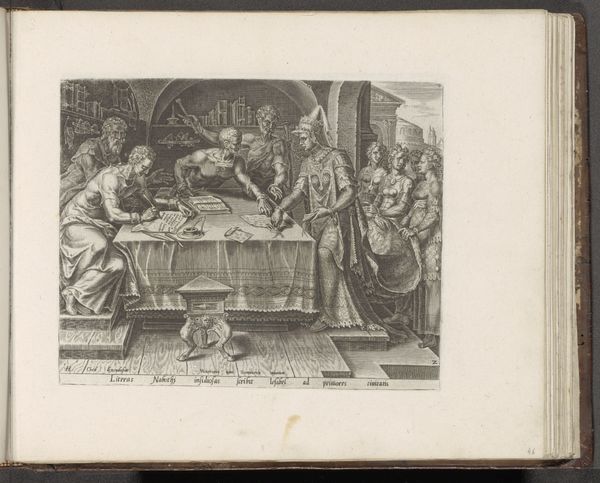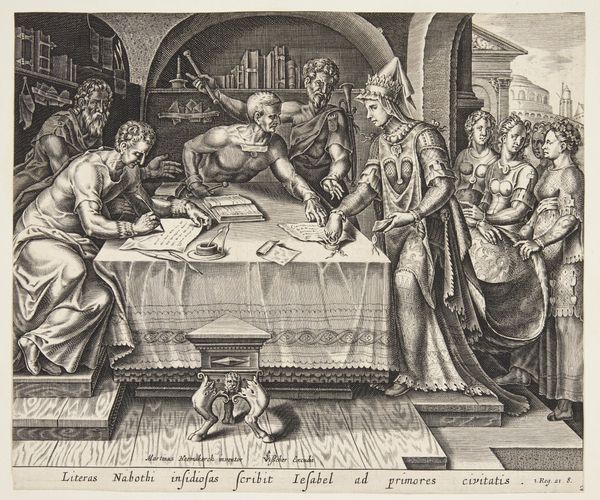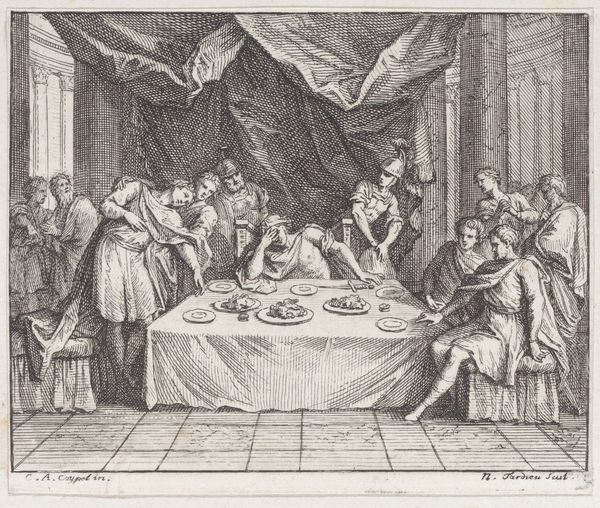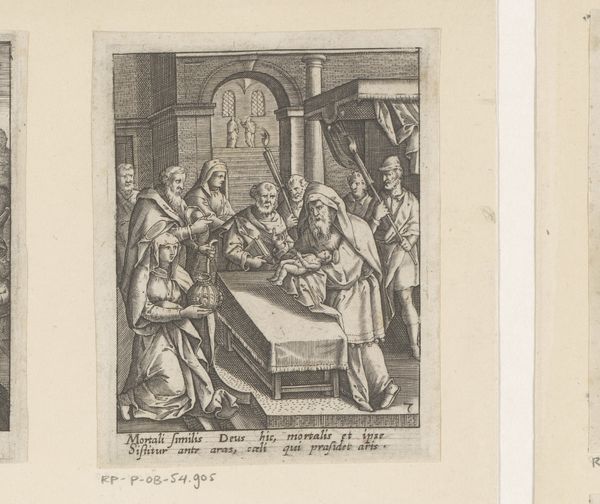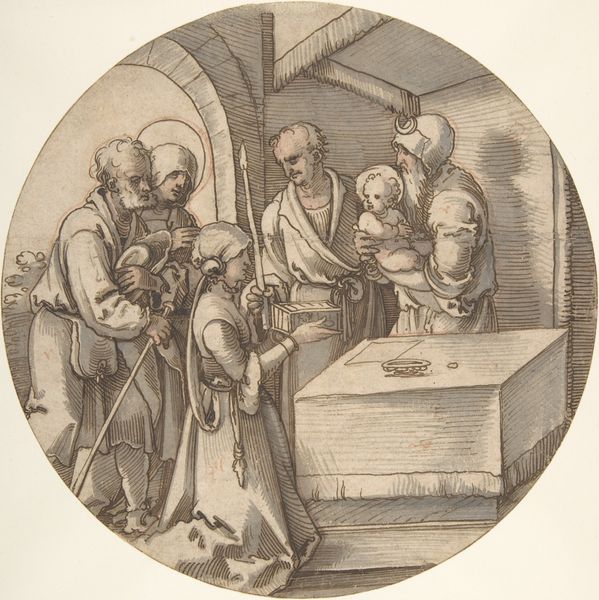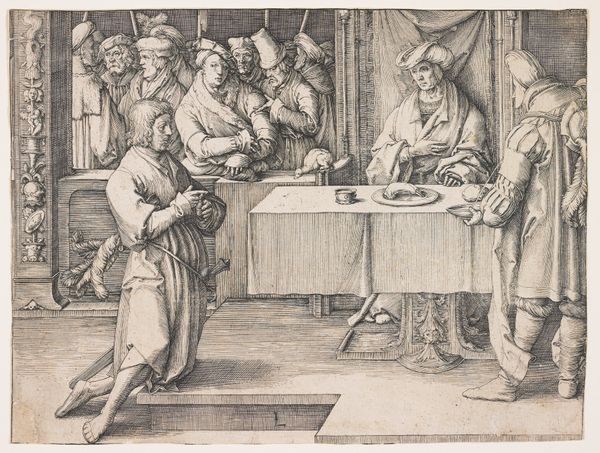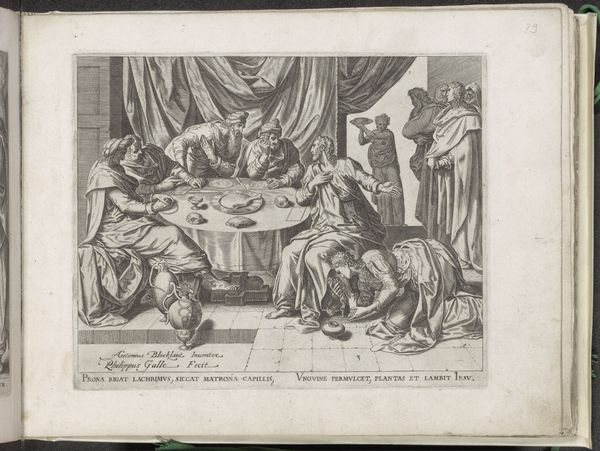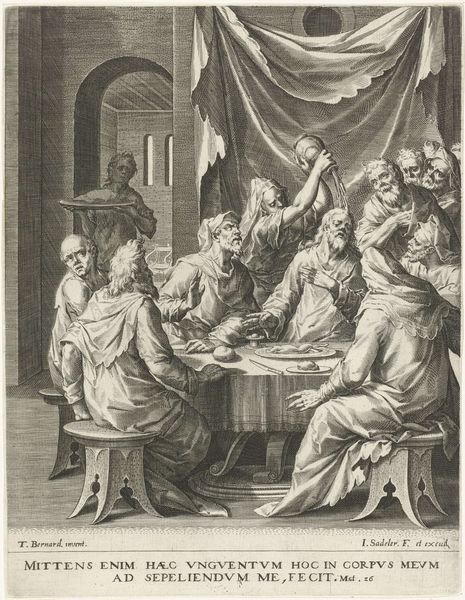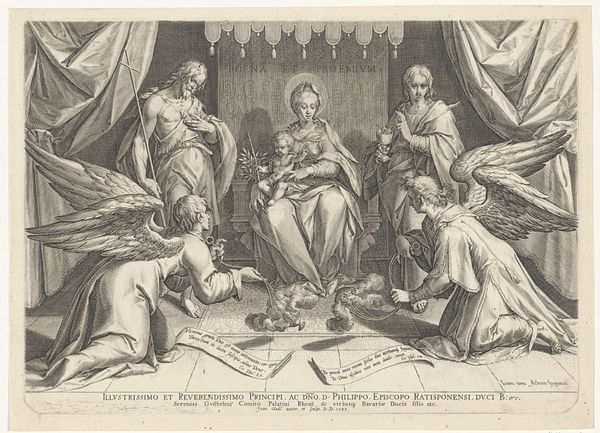
print, engraving
#
narrative-art
#
baroque
# print
#
old engraving style
#
history-painting
#
engraving
Dimensions: height 305 mm, width 351 mm
Copyright: Rijks Museum: Open Domain
Curator: Looking at this engraving, I'm struck by the flatness of the scene. Everything seems to be happening on one plane, which gives it a stage-like quality, wouldn't you say? Editor: This print, held at the Rijksmuseum, is entitled "Salome brings Herodias the Head of John the Baptist." Created around 1617 by Dietrich Krüger, it offers a stark perspective on the familiar biblical narrative. Let's consider this scene in the context of history paintings, and what the production and distribution of imagery like this actually meant. Curator: Absolutely. And within this production, there’s a very particular intersection of power, gender, and morality. We have Salome, instrumental in John's beheading, framed almost as an obedient daughter, while Herodias, often portrayed as the vengeful instigator, is relegated to the sidelines, this work begs the question of who exactly the true manipulator is, and what social biases impacted Krüger's perspective? Editor: It's important to think about the context in which the scene appears. As an engraving, this image would have been reproduced and distributed widely. Its presence shapes public understandings of the figures involved – the corrupt King Herod, the devious Herodias, the dangerous Salome. The politics of disseminating these images matter a great deal. The story serves as a cautionary tale against excessive power and immoral behavior, themes frequently depicted throughout the Baroque. Curator: Yes, but whose morality are we talking about? The male gaze is very prominent. Notice how much attention is given to Salome, in comparison to other subjects in this frame, which is highly interesting. Her power to seduce is as dangerous, if not more, than that of her mother's outright viciousness, according to the patriarchal social standard depicted here. Editor: We can appreciate that. And also reflect upon how the museum system influences how people experience the images in the present day. Curator: I completely agree, considering Krüger's "Salome," we have to examine our own social and personal narratives through a critical lens. Editor: A fitting close indeed. We see art through our own contemporary politics and we use museums to frame these understandings.
Comments
No comments
Be the first to comment and join the conversation on the ultimate creative platform.

